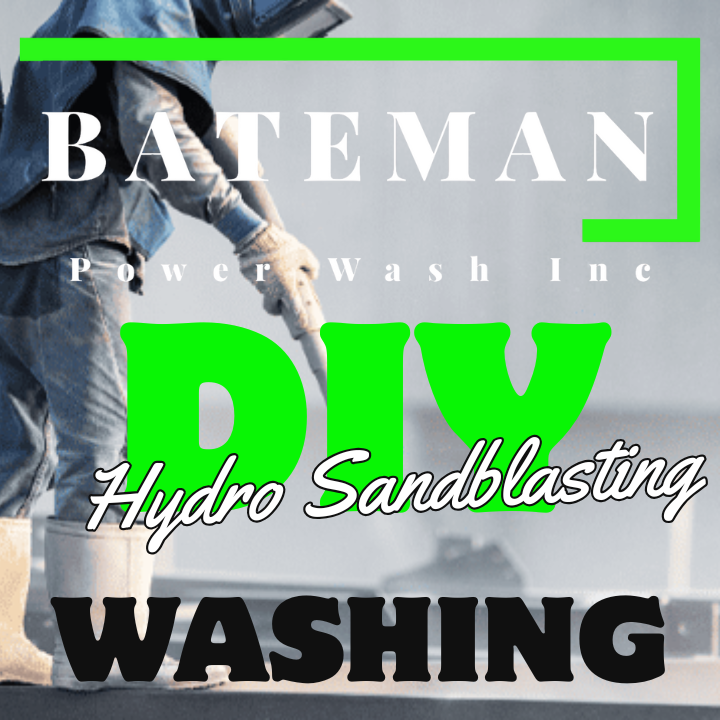Table of Contents
- Introduction: Why Use Wet Sandblasting
- Essential Equipment & Tools Checklist
- Choosing the Right Abrasive Media
- Pressure Washer Settings: PSI, GPM, Nozzles Explained
- Prepping the Work Area: Safety & Protection Measures
- Step-by-Step Process to Hydro Blast with Sand + Water
- Troubleshooting Common Issues (Clogs, Low Power, Uneven Finish)
- Post-Cleaning Treatments for Long-Lasting Results
- Advanced Tips: Technique, Speed, and Surface Protection
- Safety Protocols for DIY Wet Sandblasting
- Maintenance Schedule: How Often Should Surfaces Be Blasted?
- Client Education: What to Know Before & After Wet Sandblasting
1. Introduction: Why Use Wet Sandblasting
Wet sandblasting combines high-pressure water with abrasive sand or grit to strip away tough coatings, paint, rust, or buildup. It’s more effective than pressure washing alone and produces less dust than dry sandblasting, making it safer and more eco-friendly.
Common Uses:
- Paint & graffiti removal
- Rust and corrosion removal from steel
- Surface prep for repainting or sealing
- Cleaning concrete, stone, or brick surfaces
- Industrial equipment restoration
2. Essential Equipment & Tools Checklist
- Pressure Washer: 3,000 – 5,000 PSI, 3–5 GPM (gas-powered preferred)
- Wet Sandblasting Kit: Includes venturi head, hose, and sand probe
- Abrasive Media Hopper or Bucket
- Abrasives: (see section 3)
- Nozzles:
- 15° or 25° for blasting power
- 40° for delicate surfaces
- Water Supply: Strong, continuous flow
- Optional: Surface cleaner attachment for flat areas
- Safety Gear:
- Full face shield or blasting hood
- Heavy-duty gloves
- Waterproof suit
- Respirator (if fine particles present)
- Steel-toe boots
3. Choosing the Right Abrasive Media
Different abrasives provide different results.
- Silica-Free Sand (Play Sand / Blasting Sand): Affordable, general-purpose
- Crushed Glass: Gentle on metal, effective for paint removal
- Garnet: Heavy-duty cutting, removes rust & coatings fast
- Soda (Baking Soda Media): Safe for softer materials, eco-friendly
- Steel Grit/Shot: Aggressive, industrial-grade stripping
⚠️ Avoid silica sand unless using a respirator – it produces dangerous dust (silicosis hazard).
4. Pressure Washer Settings: PSI, GPM, Nozzles Explained
- Light Jobs (wood, soft stone): 2,000 – 2,500 PSI, wide fan nozzle
- Paint Removal (metal, concrete): 3,000 – 4,000 PSI, 25° nozzle
- Rust/Heavy Coatings (steel, industrial): 4,000 – 5,000 PSI, 15° nozzle
GPM: At least 3.0 GPM flow for abrasive siphoning.
Nozzle: Start wider (25°–40°), narrow only if needed.
5. Prepping the Work Area: Safety & Protection Measures
- Clear area of bystanders, vehicles, and fragile items.
- Cover plants, windows, and electrical outlets.
- Ensure proper drainage for slurry runoff.
- Wear full PPE (face, hands, boots, suit).
- Test blast on a small hidden area first.
6. Step-by-Step Process to Hydro Blast with Sand + Water
Step 1: Setup
- Connect sandblasting kit to pressure washer.
- Place sand probe into abrasive container.
Step 2: Pre-Wet Surface
- Lightly rinse area to reduce dust.
Step 3: Begin Wet Sandblasting
- Hold wand at 8–12 inches from surface.
- Work in smooth, overlapping passes.
- Keep nozzle moving to prevent gouging.
Step 4: Refill Media as Needed
- Monitor abrasive flow – add sand to hopper as required.
Step 5: Rinse Surface
- After blasting, rinse with clean water to remove residue.
7. Troubleshooting Common Issues
| Problem | Cause | Solution |
|---|---|---|
| Clogged Hose | Wet or clumpy sand | Use dry abrasive, sift before loading |
| Low Suction | Inadequate water flow | Use larger washer (3+ GPM) |
| Uneven Finish | Holding wand too close | Maintain steady distance, overlap passes |
| Slow Paint Removal | Wrong media | Switch to garnet or crushed glass |
8. Post-Cleaning Treatments for Long-Lasting Results
- Metal: Apply rust inhibitor or primer immediately.
- Concrete: Seal surface to prevent stains or algae.
- Wood: Sand lightly before staining or sealing.
- Brick/Stone: Apply water-repellent coating for longevity.
9. Advanced Tips: Technique, Speed, and Surface Protection
- Use fine media for detailed work, coarse for fast stripping.
- Blast at an angle (30–45°) for best cutting action.
- Keep nozzle moving — dwelling in one spot will gouge surfaces.
- For large jobs, work in sections to stay consistent.
- Recycle abrasives (if clean and dry) to reduce cost.
10. Safety Protocols for DIY Wet Sandblasting
- Always wear full PPE — water + sand at 3,000+ PSI can cut skin.
- Never point wand at yourself or others.
- Do not use near electrical equipment.
- Beware of ricochet from hard surfaces.
- Dispose of spent abrasive and slurry properly (avoid storm drains).
11. Maintenance Schedule: How Often Should Surfaces Be Blasted?
| Surface | Frequency |
|---|---|
| Steel (rust-prone) | As needed, usually every 6–12 months |
| Concrete/Driveways | Every 1–3 years |
| Paint Prep | Before every repaint |
| Graffiti Removal | As soon as graffiti appears |
12. Client Education: What to Know Before & After Wet Sandblasting
Before:
- Expect some slurry mess – protect surroundings.
- Cover glass, plants, and delicate items.
- Ensure strong water supply.
After:
- Surface will be bare and porous – protect quickly.
- Apply coatings (paint, sealers, inhibitors) to maintain results.
- Inspect area for missed spots and touch-up if needed.

